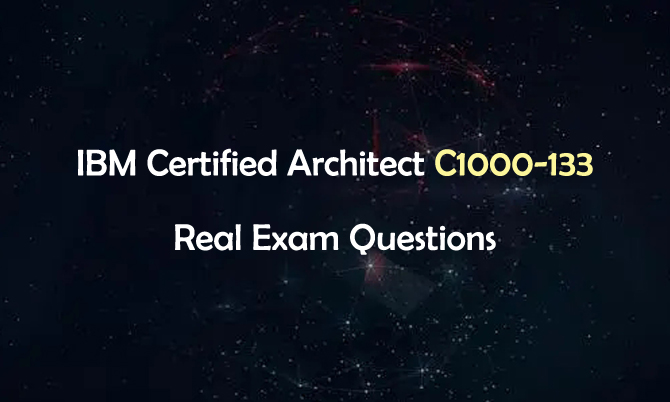IBM Certified Architect C1000-133 exam is one for IBM Certified Architect - Sterling Order Management v10.0 and Order Management on Cloud certification. To earn the certification, you need to have knowledge and experience planning, installing, configuring, and managing the application. IBM certification C1000-113 real exam questions have been cracked, which are the best material for you to test the consultative skills, business knowledge, and technical expertise to effectively integrate packaged technology into a company-s business environment to achieve the desired business objectives.
IBM certification C1000-133 exam information is the first step for you to study the test.
IBM Certified Architect - Sterling Order Management v10.0 and Order Management on Cloud C1000-133 exam objectives cover the following details.
Section 1: Solution Scope 8%
Section 2: Planning and Design 11%
Section 3: Implementation and Integration 52%
Section 4: Extending the Solution 22%
Section 5: Reporting and Monitoring 7%
IBM C1000-133 real exam questions are the best material for you to test the following IBM Certified Architect - Sterling Order Management v10.0 and Order Management on Cloud topics. Share IBM certification C1000-133 real exam questions and answers below.
1.During a Silent installation of the application, if a user does NOT want toperform any of the database operations, which setting needs to be configured?
A. REINIT_DB
B. LOAD_DEFAULTS
C. NO_DBVERIFY
D. DB_DATA
Answer: A
2.An implementation professional needs to implement the use of Promising server and database sharding. Which version(s) of IBM Sterling OrderManagement needs to be installed?
A. Standard or Enterprise
B. Enterprise only
C. Professional or Standard
D. Professional or Enterprise
Answer: B
3.In IBM Sterling Order Management (OMS), an implementation professional needs to define the menu options that a specific user will see. How should this requirement be configured?
A. New menu options can be configured in the Application Manager. This menu will be defined for a specific user, so it is not necessary to include this new menu in menu groups.
B. Default menu options can be modified in the profile properties file created in the OMS installation folder
C. Personalized menu options can be developed using pre-defined Java class files located in the <INSTALL_DIR>/externalDeployments folder.
D. New menu options for a specific user can be defined in the Application Manager As with any other menus options defined in the solution, it should be included in a menu group.
Answer: D
4.An implementation professional has extended an API template and anout-of-the box table. For both these modifications, the modified XML file has been kept in the appropriate directory. To ensure these changes are effective, the resourses.jar and entities.jar files need to be rebuild. Which is the BEST way to accomplish this?
A. Run the deployer.sh -t entitydeployer command from the %INSTALL_DIR%/bin folder
B. Run the deployer.sh -t resourcejar and then deployer.sh -t entitydeployer commands from the %INSTALL_DIR%/bin folder
C. Run the deployer.sh -t entitydeployer and then deployer.sh -t resourcejar commands from the %INSTALL_DIR%/bin folder
D. Run the deployer.sh -tresourcejar command from the %INSTALL_DIR%/bin folder
Answer: B
5.As part of implementation, it is required for return orders createdagainst a sales order to have the value of an extended database attribute of the YFS_ORDER_LINE table. At the time of return creation, this attribute must be copied from the sales order onto the return order. How can this be accomplished?
A. Extend the createOrder API template for the return order document type to include this attribute.
B. Add the attribute to the Default Derived Order template under Process Type Details for the Order Fulfillment process type
C. Add the attribute to the template in the configuration for the include in Return transaction under the Others tab
D. In the attribute entity definition for the extended database attribute, set CopyToRelatedOrders ='Y'
Answer: C
